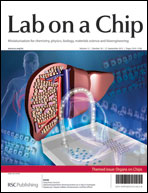In this paper, we investigate the effect of electrical pulse bias on DNA hybridization events in a biosensor platform, using a Carbon Nanotube Network (CNN) and Gold Nano Particles (GNP) as an electrical channel. The scheme provides both hybridization rate enhancement of bio molecules, and electrical measurement in a transient state to avoid the charge screening effect, thereby significantly improving the sensitivity. As an example, the probe DNA molecules oscillate with pulse trains, resulting in the enhancement of DNA hybridization efficiency, and accordingly of the sensor performances in Tris–EDTA (TE) buffer solution, by as much as over three times, compared to the non-biasing conditions. More importantly, a wide dynamic range of 106 (target-DNA concentration from 5 pM to 5 μM) is achieved in human serum. In addition, the pulse biasing method enables one to obtain the conductance change, before the ions within the Electrical Double Layer (EDL) are redistributed, to avoid the charge screening effect, leading to an additional sensitivity enhancement.

You have access to this article
 Please wait while we load your content...
Something went wrong. Try again?
Please wait while we load your content...
Something went wrong. Try again?


 Please wait while we load your content...
Please wait while we load your content...